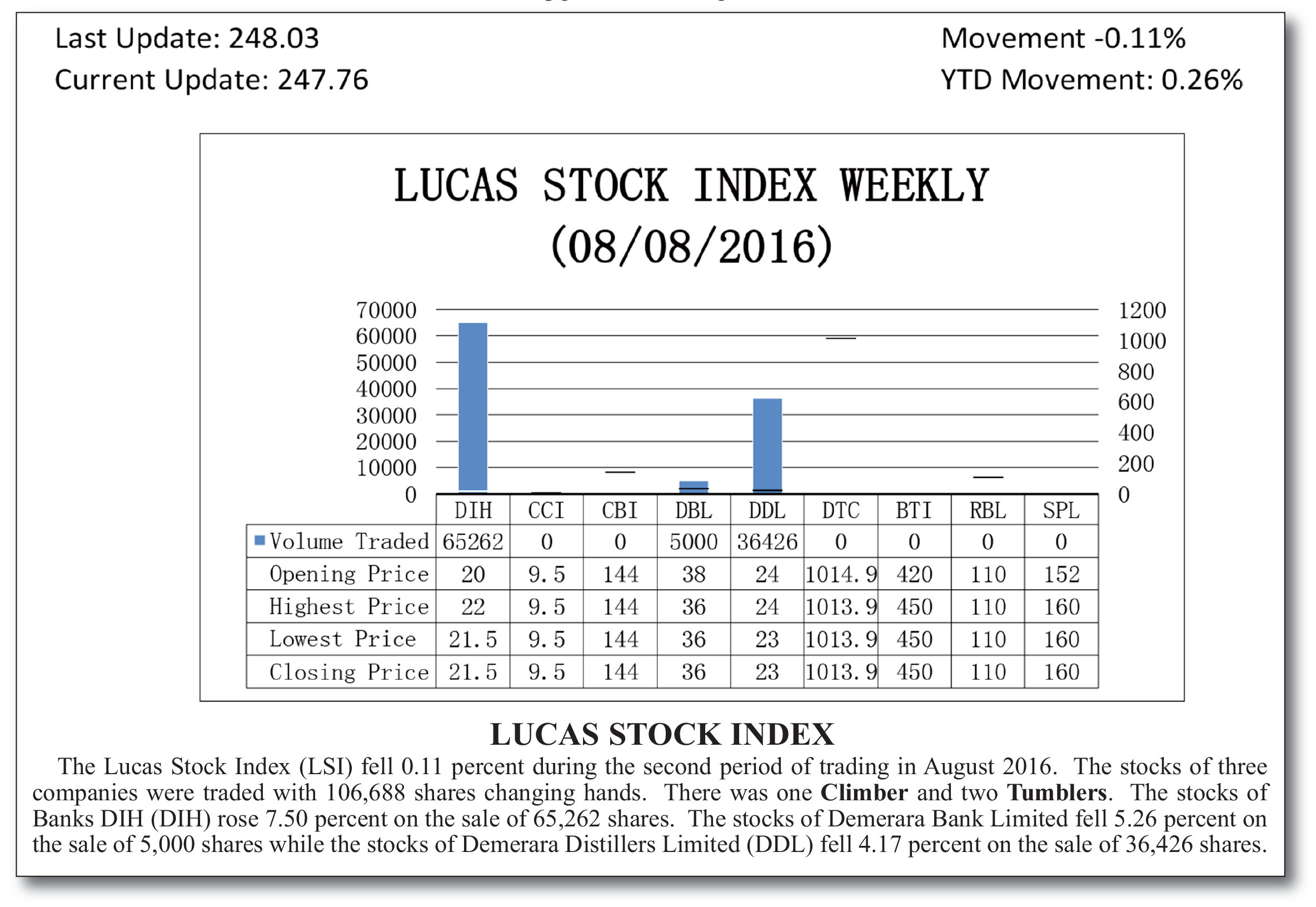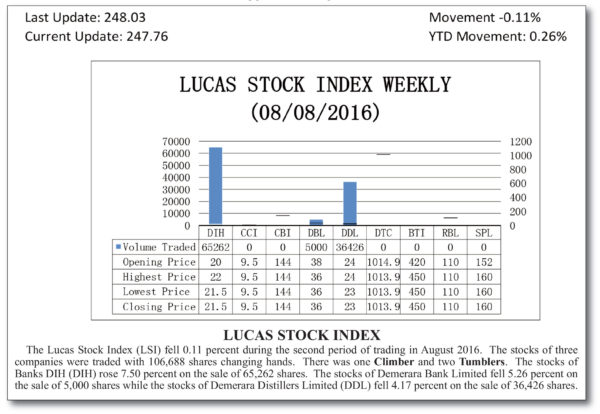Complex technology
When someone examines global trade statistics, one thing that jumps out at the reader is the difference in export revenues between primary commodities and manufactured goods. For 2015, the WTO indicated that agricultural commodities traded for an estimated US$2 trillion in export receipts. Even fuel and mining, which are two commodity groups that Guyana is counting on, collectively did not do significantly better than agricultural products. They traded for an estimated US$3 trillion. The combined primary commodity groups earned US$7 trillion less than the manufacturing group in 2015. The products of the manufacturing group generally have a higher technological content than the primary commodities, even though the process used to create the primary commodities in some cases could be the result of the use of complex technology. Nonetheless, it should be clear from the wide income gap between primary commodities and manufactured goods that the products with the higher technology content tend to yield the higher revenues.

Before seeking to answer that question, one must enquire about the knowledge structure. What is it? And, who controls it? The international knowledge structure is the set of relationships that govern the access to knowledge and technology around the world. In other words, the knowledge structure consists of the agreements, rules, institutions and practices that help to determine who owns knowledge and technology or innovations. It also determines who can make use of knowledge and technology, where they can do it, how they can do it and on what terms they can do it.
Creation of knowledge
The creation of knowledge starts with education and ends with innovation, the ability to combine resources to produce goods and services. Consequently, an important component of the knowledge structure is education and what can be done with it. Equally important is the application of the knowledge that is acquired through education. This is often referred to as technology and that technology comes from research and the creation of ideas or as a result of the research work done.
Wide gap
The wide gap between export revenues from manufactured goods and those from primary commodities suggests that Guyana should give greater emphasis and support to research activities and the possible development of the ideas that the research generates. It is not known how much of Guyana’s production benefits from research activities. It is known that rice production enjoys such support. Major companies like GuySuco and the bauxite companies when they were under the control of the government did substantial amounts of research. One can only speculate that other areas of production might be undertaking research. It is clear that the knowledge structure can permeate everything that people do in their lives and its major value is the way in which it makes the creation of goods and services possible. Another value linked to the knowledge structure is how it connects international markets where those goods and services could be traded.
As such, one sees many examples of how the knowledge structure has changed the world. One of the most powerful examples of innovation is the internet. Because of the internet, it is possible to shop without leaving the comfort of one’s home or without having to visit another country to purchase goods of one’s choice. It is possible also to share ideas with millions in a few minutes or even seconds through social media. It gives people much faster access to goods that are produced in different parts of the world with the advent of online shopping. The internet has removed the need to depend on printed catalogues which may or may not be accessible to people in countries that were deemed unlikely to use it. It makes the use of smartphones possible. It enables students to access books, journals, magazines and newspapers without having to go to a library building. The internet makes the opportunity to learn much easier than when it did not exist.
Impact of technology
Each aspect of the production of goods and services is affected by technology and technological change. The usefulness of the internet would not be possible without the computer or advances in communication technology. Goods and services can be produced in new and unexpected places. It has given globalization a different character insofar as a company can keep control over the production of different parts of a single product in different countries and which can eventually be assembled in yet another country. Technology has also had an impact on the global financial structure. For example, the Automated Teller Machine (ATM) makes it possible for people to access their bank accounts from a foreign country. Customers can make payments from their bank accounts without entering the bank or having to leave home. Further, financial markets are able to trade in complex financial instruments that would otherwise not be possible without the use of the computer. Physical products are not the only things that technology and innovation make possible. Process innovation has been a big part of how the production and finance structures of the world have changed.
Prevent free-rider problem
The major issue of course is about who controls the knowledge structure. This question is answered by knowing who controls the intellectual property rights to an invention or some form of creative work. Intellectual property rights are usually controlled through the use of patents, copyrights and trademarks. This is necessary to prevent the free-rider problem from undermining creativity. Knowledge once made public is available for use by anyone who understands how to use it. The invention could bring no financial rewards if the creator is unable to reap some benefits from his or her work. Countries eventually found a way to prevent knowledge from losing its economic value by creating intellectual property rights laws. One country that controls the knowledge structure is the United States of America (USA) which invests time and money in the creation and protection of knowledge.
There is no doubt that the production and export of primary commodities can bring higher incomes to people. The rise in gold prices, starting in 2009, above its historically low levels is a case where many Guyanese got rich from exporting gold or leasing claims over which they had rights. Oil too can have that type of impact as its price can reach exceedingly high levels as it did in 2008. Whether it is agricultural products, fuel or mineral products the story is the same. They are all primary commodities whose prices tend to fluctuate and can do so with a high degree of variability when it happens. It spells trouble for any country that relies on revenues from these products and adverse conditions set in. Things become worse when the country is unable to influence the behaviour of the market and must suffer the consequences of falling prices. Such a situation does not augur too well for Guyanese who might have hopes of seeing exceptionally large increases in salaries.
Uncertainty
With the realization that the uncertainty about seeing higher incomes will continue as long as Guyana relies on primary commodities, one could understand the need to give greater attention to the knowledge structure and where it could be used best. There are at least two reasons Guyana might want to pay close attention to this matter. One reason is that innovation is seen as the engine of growth in a country. Economic expansion would benefit from the use of new and improved ways of doing things. The increase in productivity that comes with improved production methods also enables a country to increase its revenues and be in a position to pay higher salaries. This outcome assumes that concern exists about income inequality and steps are taken to ensure that the benefits of productivity do not go to capital alone or in lopsided amounts to a small group of beneficiaries.
Rapid loss of skills
The second reason has to do with the rapid loss of skills needed to make innovation happen. About two weeks ago, the Vice-President and Minister of Foreign Affairs pointed out at a workshop on remittances that Guyana loses an estimated 91 per cent of its tertiary-educated graduates to other countries. This means that after investing time and energy to acquire the capacity to improve productivity Guyana gets no benefit from the investment. The chance of shifting from being a factor-driven economy to an innovative one diminishes with the loss of such high-level skills and with it goes the ability to attain the capacity to increase salaries at a satisfactory pace.






